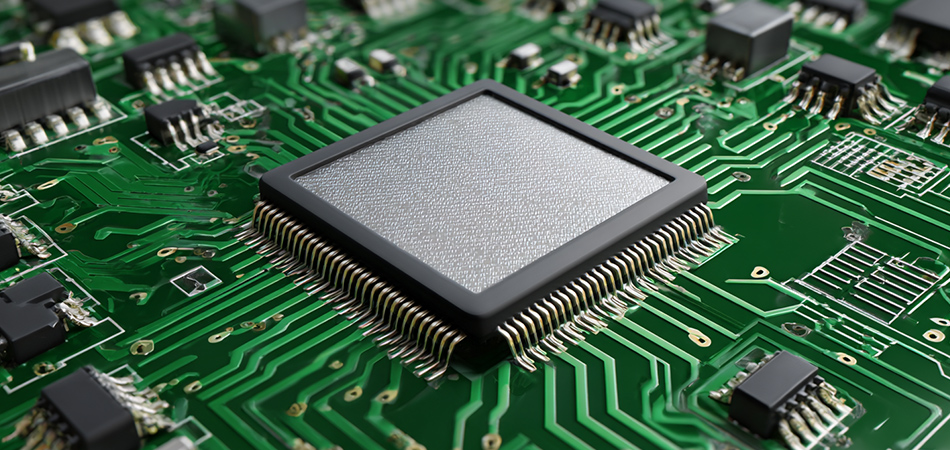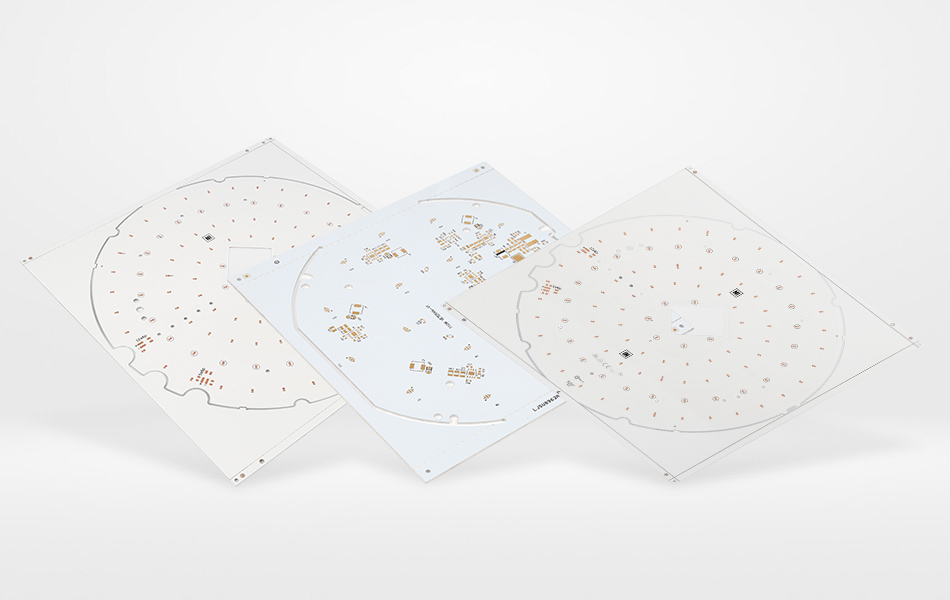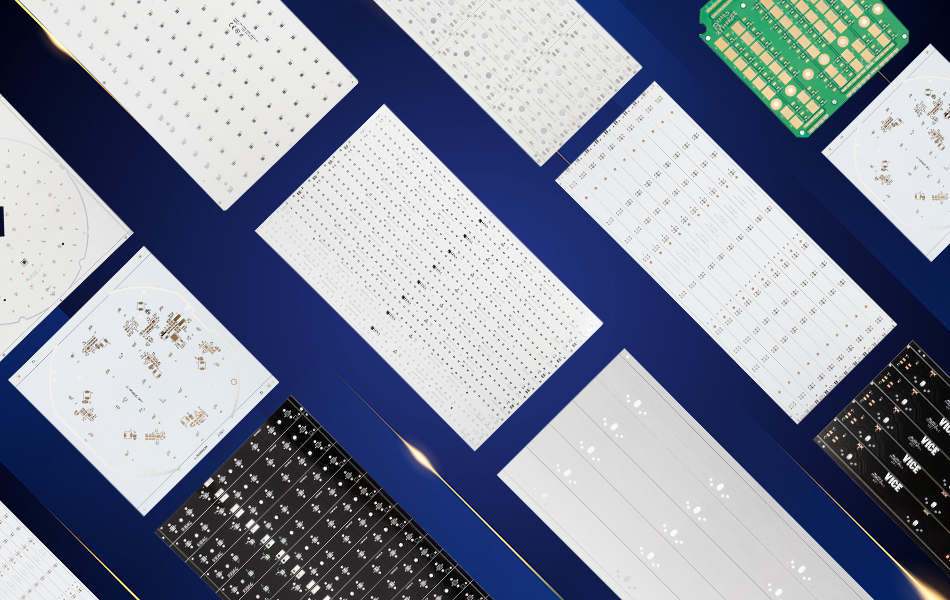-
- PCB TYPE
- PRINTED CIRCUIT BOARD PROTOTYPE ALUMINUM PRINTED CIRCUIT BOARD R&F PCB FPC HIGH FREQUENCY PCB HIGH-TG PCB HEAVY COPPER PCB HDI PCB PCB FOR LIGHTING METAL CORE PCB
time:Jul 15. 2025, 09:41:49
Aluminum printed circuit boards (PCBs) have evolved into dynamic platforms that bridge thermal efficiency, mechanical adaptability, and electrical performance, enabling breakthroughs in electronics across industries. As demand for higher power densities, miniaturization, and sustainability intensifies, aluminum PCBs are undergoing rapid innovation in materials, design, and manufacturing. This article explores the latest advancements in aluminum PCB technology, focusing on emerging material combinations, application diversification, and transformative industry trends that are reshaping how engineers approach electronic system design.
Material Innovations: Beyond Traditional Combinations
Advanced Aluminum Alloys for Specialized Environments
Recent developments in aluminum alloy formulation have expanded the functional scope of aluminum PCBs:
Scandium-Enhanced Alloys: New 7xxx series alloys incorporating scandium exhibit 25% higher tensile strength than conventional aluminum, while maintaining thermal conductivity above 200 W/mK. These alloys are ideal for aerospace PCBs, where weight reduction and structural resilience are critical.
Antimicrobial Aluminum Cores: Surface-treated aluminum cores with silver-ion additives inhibit bacterial growth, making them suitable for medical devices like surgical monitors and wearable health trackers, where hygiene is paramount.
Thermally Anisotropic Alloys: Engineered with directional grain structures, these alloys conduct heat 30% more efficiently along one axis, enabling targeted thermal management in asymmetric designs such as LED video walls.
These alloys are complemented by advanced surface treatments, including plasma oxidation, which enhances dielectric adhesion while improving corrosion resistance in marine and industrial applications.
Next-Generation Dielectric Materials
Dielectric innovation is driving performance leaps in aluminum PCBs:
Liquid Crystal Polymer (LCP) Composites: LCP-based dielectrics with ceramic fillers achieve thermal conductivity of 4 W/mK, combined with ultra-low dielectric loss (Df < 0.0015 at 10 GHz). These materials are revolutionizing high-frequency applications like 6G testbeds and automotive radar.
Phase-Change Dielectrics: Thermally responsive dielectrics that alter their CTE (coefficient of thermal expansion) at critical temperatures, reducing stress between aluminum cores and copper layers during thermal cycling—a breakthrough for reliability in EV battery management systems.
Bio-Based Epoxy Derivatives: Plant-derived epoxy resins, blended with graphene nanoplatelets, offer 80% of the thermal conductivity of petroleum-based epoxies while reducing carbon footprints by 40%. These materials are gaining traction in consumer electronics and green energy systems.
Copper Integration: New Bonding and Form Factors
Copper layers in aluminum PCBs are evolving beyond standard foils:
Nanostructured Copper Surfaces: Electrochemically textured copper with microscale ridges enhances adhesion to dielectric layers by 50%, critical for flexible aluminum PCBs in foldable displays.
Selective Copper Plating: Laser-activated plating techniques deposit copper only in high-current areas, reducing material usage by 30% in power distribution boards without sacrificing conductivity.
Oxide-Free Copper Interfaces: Inert gas annealing during lamination prevents copper oxidation, ensuring stable electrical connections in high-humidity environments like agricultural sensors.

Design Breakthroughs: Rethinking PCB Architecture
3D-Printed Aluminum PCB Structures
Additive manufacturing is transforming aluminum PCB design:
Lattice-Core Aluminum Substrates: 3D-printed aluminum cores with porous lattice structures reduce weight by 40% while maintaining thermal conductivity, enabling lightweight designs in drones and portable medical devices.
Embedded Cooling Channels: Directly printed microchannels within aluminum cores integrate with liquid cooling systems, removing 2x more heat than traditional heat sinks in high-power AI accelerators.
Hybrid 3D Structures: Combining printed aluminum cores with conventional copper layers creates complex geometries, such as curved PCBs for automotive head-up displays, that are impossible with subtractive manufacturing.
AI-Optimized Thermal Routing
Artificial intelligence is revolutionizing design workflows:
Predictive Thermal Mapping: Machine learning models analyze component placement and power dissipation to optimize thermal via placement, reducing hotspots by 35% in industrial inverters.
Multi-Objective Optimization: AI tools balance signal integrity, thermal management, and mechanical stress, generating PCB layouts that meet 10+ performance metrics simultaneously—critical for multi-functional devices like smart home hubs.
Generative Trace Routing: Algorithms design copper traces with fractal patterns that minimize EMI while maximizing heat spread, ideal for mixed-signal PCBs in IoT gateways.
Flexible and Stretchable Aluminum PCBs
Advancements in flexible electronics:
Elastomeric Dielectrics: Silicone-based dielectrics with 200% stretchability, paired with thin aluminum cores, enable PCBs that conform to human skin in wearable fitness monitors and medical patches.
Rollable Aluminum Substrates: Annealed aluminum foils (≤0.1mm thick) with fatigue-resistant properties withstand 10,000+ roll cycles, supporting rollable displays and flexible solar panels.
Shape-Memory Alloys: Aluminum-copper-nickel alloys in PCB cores return to their original shape after deformation, enabling self-healing mechanical performance in robotics and deployable space electronics.

Manufacturing Evolution: Smart and Sustainable Processes
Digital Twins in Production
Industry 4.0 technologies are optimizing manufacturing:
Virtual Lamination Simulation: Digital twins of lamination presses predict bond quality under varying temperature and pressure, reducing scrap rates by 25% in high-volume production.
Real-Time Defect Detection: Hyperspectral cameras and AI algorithms identify submicron defects in dielectric layers, ensuring reliability in aerospace PCBs.
Adaptive Process Control: IoT-enabled presses adjust parameters dynamically based on material properties, maintaining consistent quality across batch variations in aluminum alloys.
Low-Energy Manufacturing Techniques
Sustainability-driven process innovations:
Cold Sintering: Room-temperature lamination using ultrasonic bonding eliminates energy-intensive heating steps, reducing carbon emissions by 60% compared to traditional thermal lamination.
Dry Etching Systems: Plasma-based copper etching replaces chemical baths, eliminating hazardous waste in PCB fabrication—critical for compliance with EU REACH regulations.
Solar-Powered Lines: Integrated solar arrays and energy storage systems power 80% of manufacturing processes in facilities producing consumer electronics PCBs.
Circular Manufacturing Systems
Closed-loop approaches in production:
Recycled Aluminum Reclamation: On-site recycling centers recover aluminum from production scrap, reprocessing it into new cores with 99% purity, reducing raw material costs by 30%.
Dielectric Repurposing: Waste dielectric materials are ground into fillers for new composites, creating a circular material economy in PCB production.
Component Recovery: Automated disassembly of end-of-life PCBs extracts reusable aluminum cores and copper, diverting 500+ tons of e-waste annually from landfills.

Application Diversification: Beyond Traditional Markets
Quantum Computing Infrastructure
Aluminum PCBs are enabling quantum advancements:
Cryogenic-Compatible Layers: Aluminum cores with fluoropolymer dielectrics operate reliably at 1.8K (-271°C), supporting qubit control circuits in quantum processors.
Magnetic Shielding Integration: Aluminum cores with nickel-iron alloy cladding reduce magnetic interference by 90%, critical for maintaining qubit coherence in quantum computing systems.
Bioelectronic Devices
Aluminum PCBs in medical innovation:
Bioresorbable Substrates: Magnesium-aluminum alloys that dissolve safely in bodily fluids, used in temporary pacemaker PCBs that eliminate the need for surgical removal.
Neural Interface PCBs: Ultra-thin aluminum cores (0.05mm) with flexible dielectrics interface with brain tissue, enabling high-resolution neural signal recording in neuroscience research.
Space and Satellite Electronics
Aluminum PCBs in aerospace:
Radiation-Hardened Layers: Aluminum cores with boron carbide additives resist cosmic radiation damage, extending PCB lifespan in geosynchronous satellites to 15+ years.
Lightweight Power Distribution: Honeycomb-structured aluminum PCBs reduce satellite weight by 2kg per unit, lowering launch costs significantly for small satellite constellations.
Smart Infrastructure
Aluminum PCBs in urban tech:
Self-Powered Sensor Nodes: Aluminum PCBs integrated with thermoelectric generators harvest waste heat from infrastructure (e.g., streetlights, pipelines) to power IoT sensors, eliminating battery replacement needs.
Weather-Resistant Traffic Systems: UV-stabilized aluminum PCBs in traffic signal controllers withstand extreme temperature swings and UV exposure, reducing maintenance in harsh climates.

Sustainability: From Production to End-of-Life
Closed-Loop Material Cycles
Innovations in recycling and reuse:
Aluminum-PCB-to-Aluminum-PCB Recycling: A proprietary process recovers 95% of aluminum from used PCBs and reprocesses it into new cores with identical thermal properties, creating a true circular economy.
Dielectric Chemical Recycling: Solvent-based processes break down epoxy dielectrics into reusable monomers, reducing reliance on virgin petrochemicals.
Copper Recovery via Bioleaching: Bacteria-based systems extract copper from PCB scrap with 90% efficiency, using 70% less energy than traditional smelting.
Energy-Efficient Operation
Aluminum PCBs enabling greener electronics:
Low-Power Mode Optimization: PCB designs that minimize leakage current through aluminum ground planes, extending battery life in portable devices by 20%.
Thermal Harvesting Integration: Aluminum cores with integrated thermoelectric modules convert waste heat into usable electricity, powering auxiliary systems in industrial equipment.
Eco-Design Principles
Sustainability embedded in design:
Modular PCB Architectures: Aluminum PCBs with snap-fit connectors enable component replacement without discarding the entire board, reducing e-waste in consumer electronics.
Material Reduction Strategies: AI-driven design tools minimize aluminum usage by optimizing core thickness based on thermal load, reducing material consumption by 15% in LED lighting PCBs.

Future Trends: Shaping the Next Decade of Aluminum PCBs
Atomic-Level Material Engineering
Single-Layer Graphene-Aluminum Hybrids: Lab-scale experiments show graphene-monolayer coatings on aluminum cores can triple thermal conductivity, potentially enabling ultra-thin PCBs for quantum sensors.
Topological Insulator Dielectrics: Materials that conduct electricity on their surfaces while insulating internally could revolutionize high-frequency aluminum PCBs, supporting terahertz communication.
Smart and Adaptive PCBs
Self-Monitoring Aluminum Cores: Embedded nanosensors in aluminum cores detect cracks and corrosion in real time, enabling predictive maintenance in critical infrastructure like power grids.
Thermally Reconfigurable Circuits: Aluminum PCBs with phase-change materials that alter trace conductivity based on temperature, optimizing performance across operating conditions.
Cross-Industry Convergence
Biomedical-Electronic Fusion: Aluminum PCBs integrated with biological tissues in lab-on-a-chip devices, enabling real-time monitoring of cellular reactions for drug development.
Energy-Electronics Integration: Aluminum PCBs that double as structural components in batteries, combining power storage and circuit functionality in EVs and portable devices.
Conclusion
Aluminum PCBs have transcended their role as mere circuit carriers to become active participants in electronic system performance, sustainability, and innovation. From 3D-printed structures to bioresorbable designs, these PCBs are enabling technologies that were unimaginable a decade ago. As materials science, manufacturing, and design continue to advance, aluminum PCBs will remain at the forefront of electronics evolution, driving progress in fields as diverse as quantum computing, renewable energy, and personalized medicine. For engineers and manufacturers, embracing these innovations is not just a technical necessity but a strategic imperative to create the efficient, sustainable, and versatile electronic systems of the future.

Got project ready to assembly? Contact us: info@apollopcb.com



We're not around but we still want to hear from you! Leave us a note:

Leave Message to APOLLOPCB
